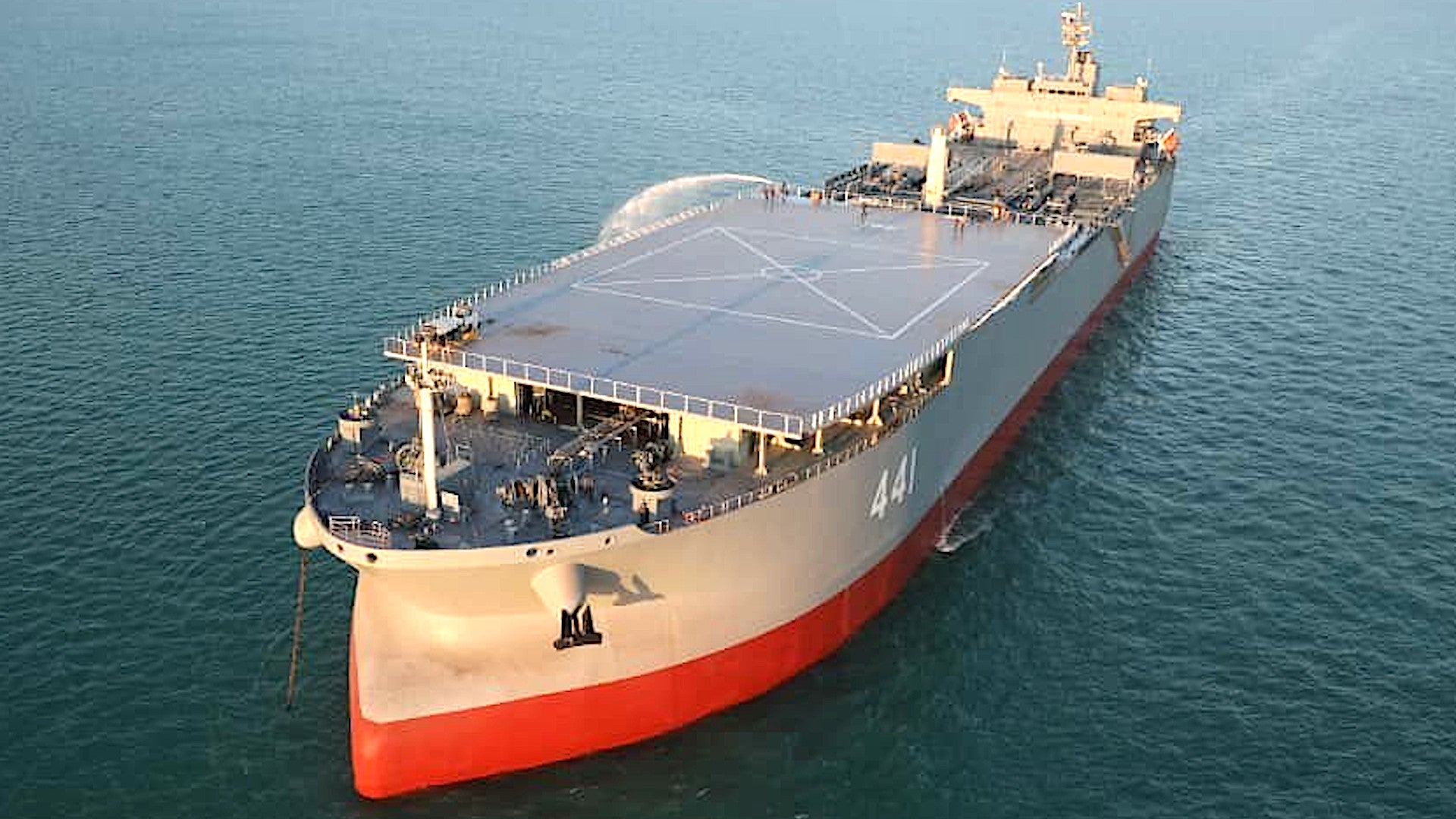The Iranian Navy’s new sea base-like ship Makran and Sahand, its most modern warship, have reportedly rounded southern Africa’s Cape of Good Hope and appear to be heading toward the Atlantic Ocean. This would be the first time Iranian naval vessels have operated in the Atlantic and previous reports have indicated that their final destination is in Venezuela, where they might offload a shipment of weapons. This latest news about Makran and Sahand also comes two days after the Kharg, one of Iran’s largest and most important naval ships, sank after suffering a major fire, the causes of which remain unclear.
Politico, which first reported that Makran and Sahand could be making their way toward the Atlantic last week, put out a new story on June 4, 2021, regarding the ships passing the Cape of Good Hope. Iran has announced multiple planned naval missions to Venezuela in the past, but has never actually succeeded in doing so.
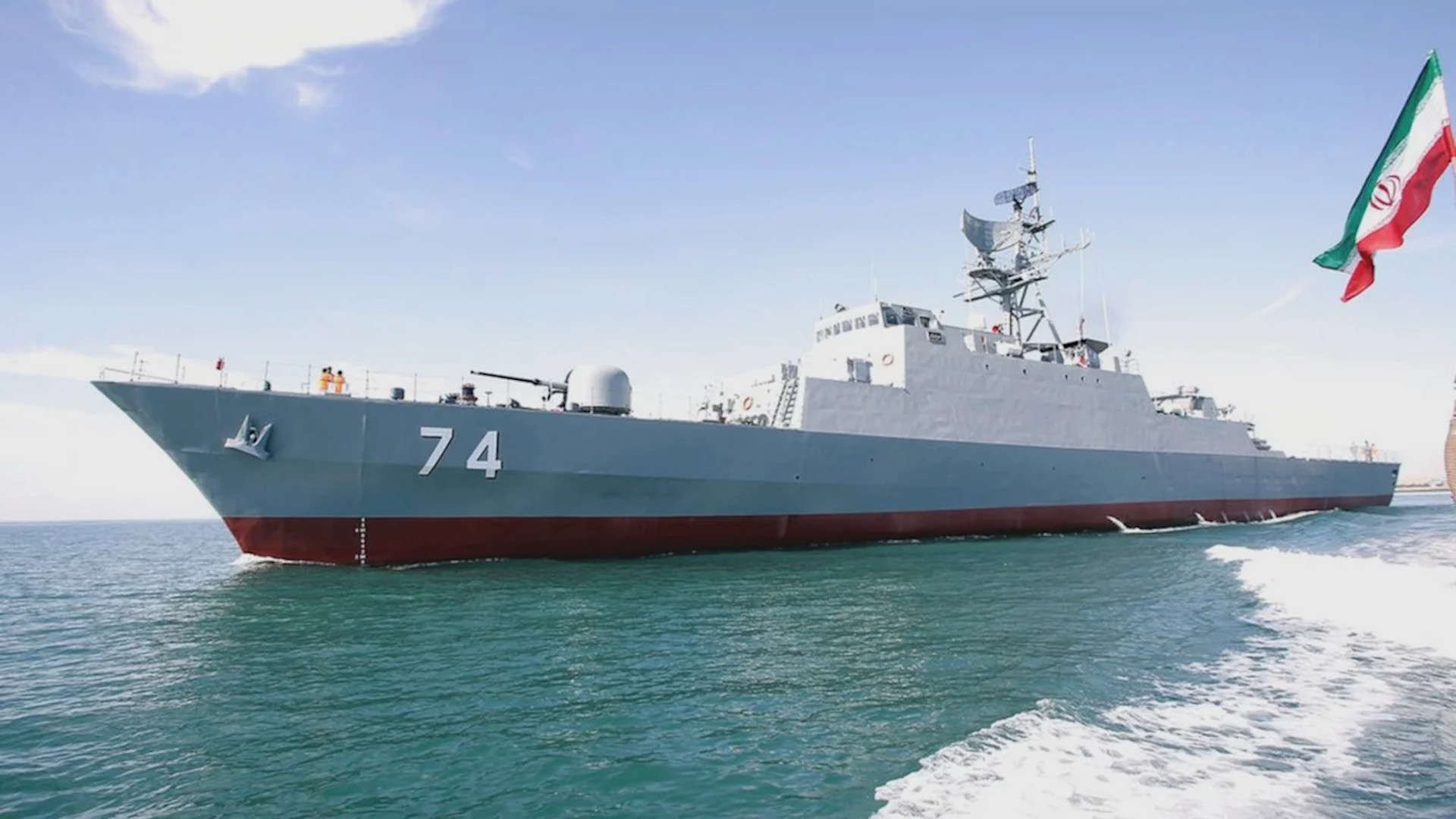
The same U.S. officials who had relayed the information about the Iranian naval vessels to Politico also said there was still a possibility the vessels could turn back. There were unconfirmed claims on social media following the loss of Kharg on June 2 that Iranian officials had canceled the planned voyage to Venezuela so that Makran could continue the sunken ship’s mission, which had purportedly been to bring Iranian military personnel to Russia.

The exact intended goals of any Iranian naval mission into the Atlantic, in general, or to Venezuela, specifically, are unknown. Earlier this week, Iranian officials stressed that their country has a right to operate warships in any international waters and warned the U.S. government against interfering with those activities, but did not confirm or deny any details about where Makran and Sahand were headed or why.
Satellite imagery that emerged earlier this week, which was first reported on by USNI News, indicated that Makran was carrying up to seven small fast attack craft on its top deck. These appeared to be members of Iran’s Peykaap family of boats, the original version of which was derived from a North Korean design, or some other similar design. The Peykaap II and Peykaap III variants, the latter of which are also referred to as Zolfaghars, can carry anti-ship cruise missiles.
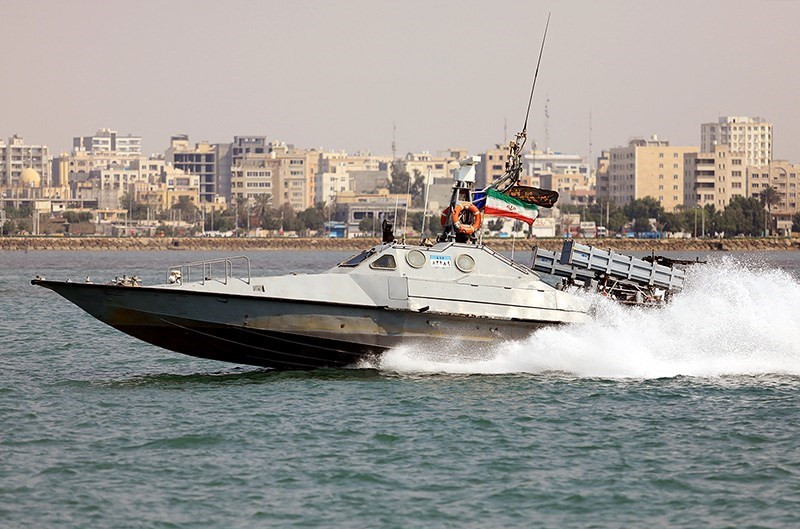
This, in turn, prompted reports that the ship could be delivering those boats, as well as other military cargoes, to Venezuela. Makran, which the Iranian Navy formally commissioned into service in January, is an oil tanker converted into what has been described as a “forward base ship” and now most notably features a relatively large open flight deck on its bow end. The vessel, which you can read more about in general here, also has a large crane for moving materiel around and would have ample space to serve as a more general transport, if required.

“The delivery of such weapons would be a provocative act and a threat to our partners in this hemisphere,” Pentagon Press Secretary John Kirby said in a statement earlier this week. “As such, we would reserve the right to take appropriate measures — in concert with our partners — to deter the delivery or transit of such weapons.”
Venezuelan President Nicolas Maduro has openly talked about buying weapons from Iran and there have been reports in the past of growing military and non-military cooperation between the regimes in the two countries. Both countries are subject to significant international sanctions, especially from the U.S. government and with a major emphasis on preventing them from making money from their oil and related industries.
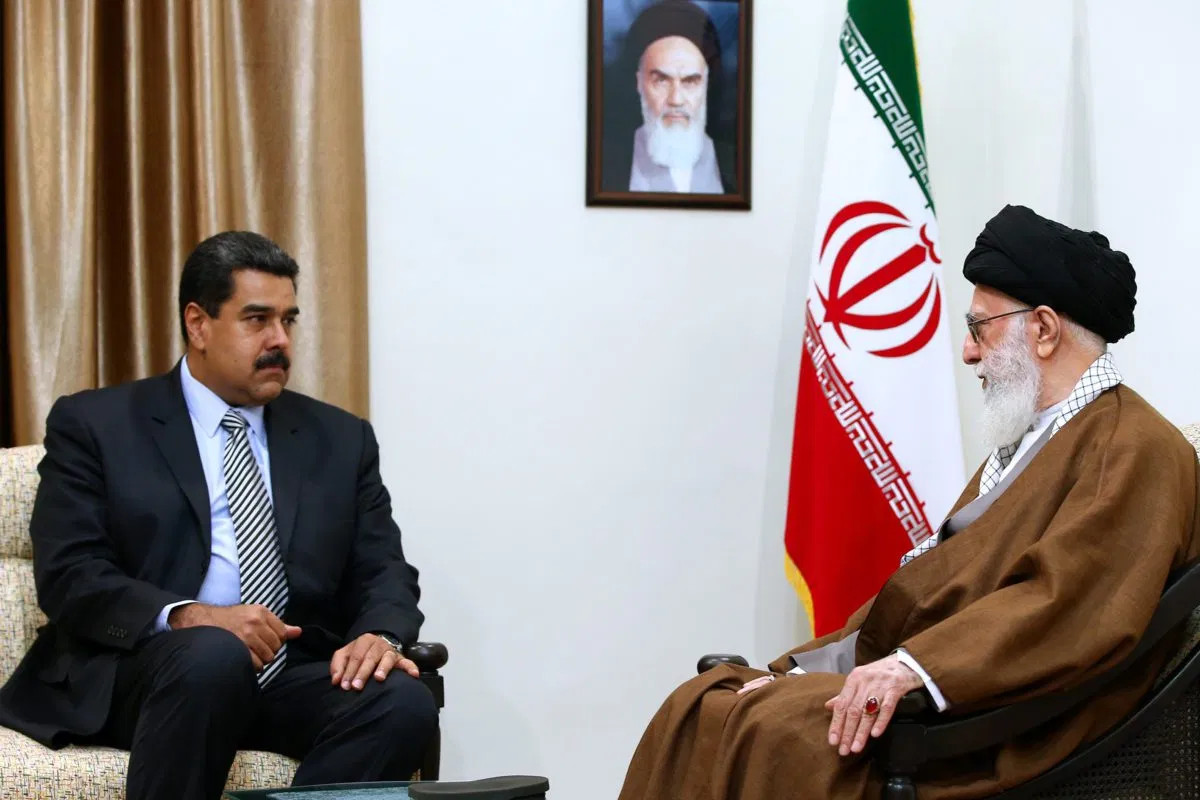
Last year, Iran sent multiple shipments of gasoline, via tanker ships, to Venezuela. In August 2020, the U.S. government notably announced that it had succeeded in using legal mechanisms to stop four Liberian-flagged tankers that had been bound for Venezuela carrying Iranian gasoline and seize their cargoes. Those ships were detained near the strategic Strait of Hormuz, which links the Persian Gulf and the Gulf of Oman.
Iranian-made fast attack missile boats could certainly bolster the Venezuelan Navy’s own capacity to deter any such attempts to intercept commercial ships closer to its own shores, as well as its ability to conduct more general coastal patrol missions. Last year, Maduro’s regime brushed off an attempted coup, details of which continue to emerge and have only become more bizarre as time has gone on, which included mercenary forces, some of whom were veterans of U.S. special operations units, arriving by sea in small boats.
It’s also possible that Iranian personnel could use the fast attack craft in upcoming exercises together with Venezuelan forces.
Similarly, Makran and Sahand could demonstrate Iran’s own ability to provide immediate security for future shipments of gasoline, or anything else, to Venezuela or other countries. It is important to note that, while Iran has often touted Sahand as a destroyer or a frigate, the 2,000-ton-displacement ship, which is a derivative of British-made warships supplied to the Shah’s Iran in the 1970s, is much more accurately categorized as a corvette. There is also nothing to support previous Iranian claims that the ship has any “stealth” design features.

However, it is still a reasonably well-armed vessel with launchers for the Qader subsonic anti-ship cruise missiles, a design derived from the Chinese C-803, and Sayyad-2 surface-to-air missiles, a reverse-engineered version of the U.S. RIM-66 Standard Missile-1 (SM-1). They also have a 76mm main gun and torpedo tubes, as well as various automatic cannons and machine guns for close-in defense. This would certainly present an impediment to any foreign navy, coast guard, or other law enforcement entity seeking to board and seize tankers or cargo ships it might be escorting.
On an even more basic level, while Makran and Sahand represent, at best, a token deployment. Even just sending them into the Atlantic would show the Iranian Navy’s ability to operate in the Western Hemisphere at all. If the two vessels do continue on their apparent present course, this voyage, any similar naval missions that follow, is certain to become a feature in Iranian propaganda. The regime in Tehran routinely criticizes, as well as outright threatens, the U.S. Navy’s presence in the Persian Gulf, and has recently resumed a campaign harassing American naval activities there. Iranian officials, as well as their Venezuelan counterparts, would undoubtedly relish the opportunity to have warships ‘in America’s backyard.’
Whatever happens, there, of course, remain significant questions about the Iranian Navy’s ability to conduct long-range transits to or from the Atlantic on any sort of regular basis going forward. The loss of Kharg, ostensibly a replenishment ship that could also transport cargo if needed, is a major blow to Iran’s ability to conduct any sort of naval activities outside of the Middle East.
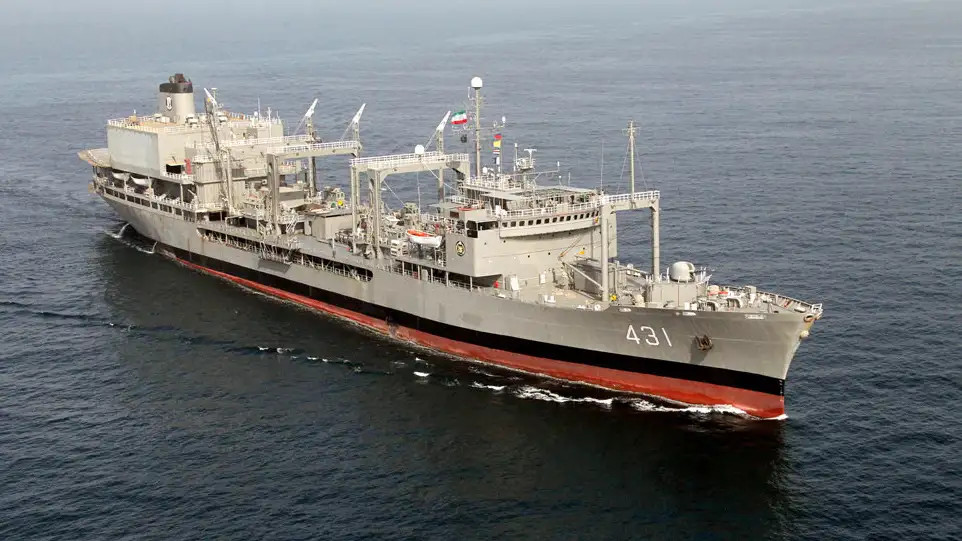
The circumstances surrounding Kharg‘s sinking remain murky, but there is already much speculation that it could be related to a clandestine campaign that Israel had been conducting against Iranian commercial and naval vessels. The focus of these Israeli attacks has reportedly been on hampering Tehran’s ability to export oil, gasoline, and other petroleum products and to ship weapons and other military materiel to allies and proxy forces around the Middle East.
Israeli is also widely believed to be behind various acts of suspected sabotage against nuclear and oil-related facilities, among other sites, inside Iran, as well. The same day that Kharg sunk, a leaking pipeline also exploded at an oil refinery outside of Tehran, touching off a massive blaze that took a day to get under control. Iranian authorities are now investigating exactly how that incident unfolded.

All of this comes as President Joe Biden’s administration continues to seek rapprochement with Iran, including indirect talks with Tehran over the U.S. government’s return to a controversial international deal over Iranian nuclear ambitions. President Donald Trump’s administration withdrew from that agreement in 2018 and Iranian authorities have since violated all of its key terms. A core issue in the current negotiations is the relaxing of various crippling U.S. sanctions on Iran.
With all of this in mind, the appearance of Makran and Sahand in the Atlantic, let alone in a Venezuelan port, could offer another tool for Iranian officials to apply pressure on the United States, among other international opponents. Iran would hardly be the first country to seek to send signals to the U.S. government by sending naval and other military assets to Venezuela, as well as into the Atlantic more generally.
All told, while the direct, immediate impact of the two Iranian warships sailing into the Western Hemisphere may be minimal, their arrival, which looks increasingly imminent, still promises to be a significant geopolitical development, especially for officials in Tehran and Washington, D.C.
Contact the author: joe@thedrive.com
